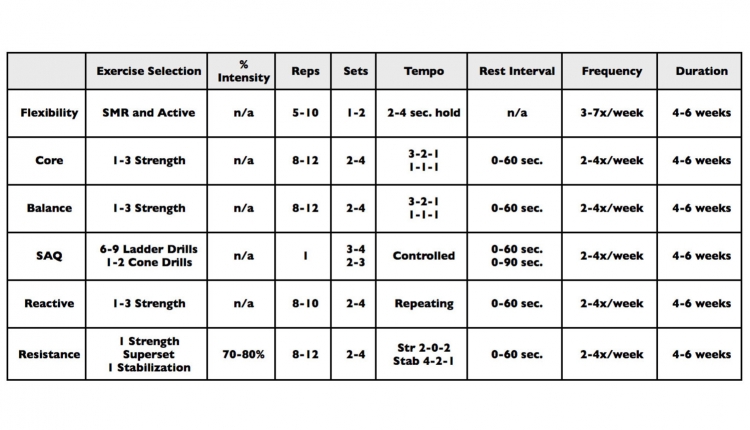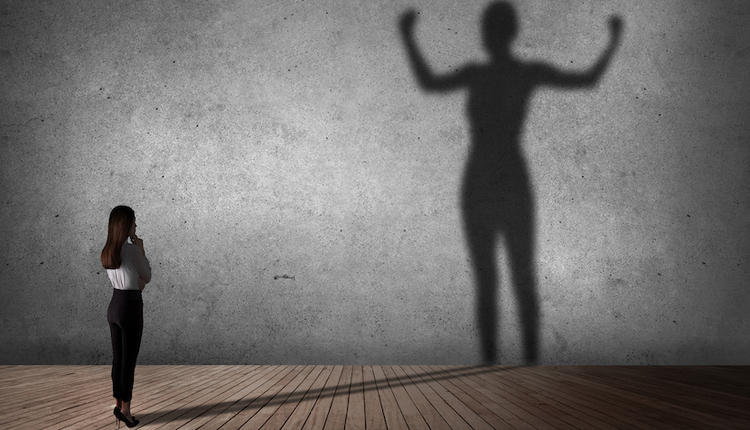The snow is gone. Spring has sprung, summer is quickly approaching if you are in the south like myself we are starting to feel the full impact of summer and you know what that means for many of our clients. Road races, triathlons, duathlons, cycling events, swim teams and tennis are in full swing. Through using a systematic and progressive approach to your sessions with your clients they are now challenging themselves at a higher level that just a few months ago. This of course means that new issues are arising. Luckily for us there is a very good 'go to' approach that can often be the solution; Myofacial Release Techniques.
Let's consider for a moment you have a client who completes in sprint triathlons. They spend a ton of money on their bike getting the lightest, most aerodynamic model available. They purchase special racing flats to lighten their step with every stride. They purchase the latest heart rate monitor with GPS that works in the water, on the bike, and run. They follow a precise aerobic training/tri training plan to a 'T.' Their nutrition is on target and they have you. Yet, they are not moving well and they are feeling physically limited. This is because along with buying all of the best the typical triathlete will spend hours training in a sagittal plane pushing their metabolic and aerobic capacities to the max, but will not take the time to prepare their bodies for this grueling punishment or reward their bodies for a job well done after their training. They simply go run, bike, swim and on with their daily lives they go because training time is a precious commodity. I have taken the liberty to "sell out" the triathlon competitor, because I am one and at in my previous seasons I admit to not taking the time to roll out before and/or after training. The only difference is that I do not wonder why, I know why. Let me share with you that before embracing Myofacial Release Techniques I was unable to break into a sprint stride, much less a stride that was longer than my endurance run stride. In this article I will explain to you the benefits to Myofacial Release Techniques a.k.a. rolling out and impress upon you the benefits and ease of incorporating this into your individual training program and that of your clients.
Using Myofacial Release Techniques is similar to giving yourself a deep tissue massage without the hassle of scheduling, traffic, the ongoing expense and the added benefit of knowing exactly what muscles need to be addressed. Ultimately the use of Myofacial Release Techniques is a cost and time effective way to reduce your issues and prevent injuries by not allowing the injury cycle that typically begins with muscular imbalance to start. As we all know a tight muscle is a weak muscle that does not fire appropriately and this will lead to movement compensation and movement compensation will lead to the skeletal system being overloaded in an unbalanced fashion which will result in injury.
Myofacial Release Techniques in its earlier days was performed using a foam roller and prevalent in therapeutic facilities and used by therapists enlightened personal trainers and mind body practitioners. We know now that using a foam roller is antiquated and not as beneficial as using the Trigger Point Grid, Quadballer, Footballer and Trigger Point ball. A foam roller does not allow adequate blood and oxygen flow to the muscles being addressed and also can lose its form quickly. The other down side to just using a foam roller is that it is impossible to address all muscles effectively and some not at all. Just like we have different tools to use with our clients during their training session such as BOSU, SURGE 360, dumbbells, Spri Bands etc. Myofacial Release Techniques also have different tools to necessary to achieve the specific results you desire.
What is its importance to the de-conditioned, general population, movement impaired and athletes? The bottom line is stopping the injury cycle before it starts. In my experience those who need it the most will get the most from the least and at the top of this list are those who are de-conditioned and athletes. The reasoning behind these two very different demographics are placed in the same category is because the de-conditioned have muscular issues that they assume are just a part of their daily lives and that there is nothing that can be done about it. Athletes know they have issues and are not willing to sacrifice their training time to address the issues and just chose to push through with a mental toughness that comes from the mantras of "what does not kill you makes you stronger," "pain is weakness leaving the body" and/or "no pain no gain." It is our responsibility as educated fitness professionals to educate all of our clients on the importance of all the aspects of fitness that will lead to a positive experience with fitness and long term success. I have found using the following 7 guidelines listed below my clients have success and are happy.
Tips for success of implementation of Myofacial Release Techniques 1) I recommend to my clients to rollout 2-3 times/day for the first month and then a systematic decline to two times/day in month two if the "awareness" spots have decreased to one time/week for month three and beyond assuming that the muscular system is functioning well and is "awareness" free. 2) Rollout prior to exercising 3) When it's time to increase the force on the tissue decrease your points of contact (reduce surface area by going from the grid to the Quadballer to the Trigger Point Ball). 4) Roll through a small area of tissue at a time before progressing to the next area. Making sure to overlap the areas so no tissue is left untouched. 5) When possible more the joint about or below the point of contact. 6) When possible add in cross friction. 7) Always try to position the roller in the same direction that the muscle fibers run.
6 basic exercises and protocols that all individuals need ...
1) Soleus/Gastrocnemius
2) Rectus Femoris/Vastus Lateralls
3) IT Band
4) Psoas
5) Piriformis
6) Pectoralis Major and Minor
Please visit us at www.catalystfitness.com for the video links to these exercises or www.tptherapies.com for further information and products available. The benefits of SMR: Muscle Hydration through increasing the internal temperature and blood flow to each muscle group. Not loading the muscular and skeletal system in a state of dysfunction. Ultimately SMR will result in lengthening the body’s muscular system, more efficient movement, better athletic machine.
Valorie Ness is CEO of Catalyst Fitness Midtown located in Atlanta, Georgia. She has been in the industry for over 15 years and travels nationally and internationally as an educator and presenter. Valorie is the 2013 PFP Trainer of the Year, master trainer for ACE, Red Cord and Catalyst Fitness.www.catalystfitness.com













